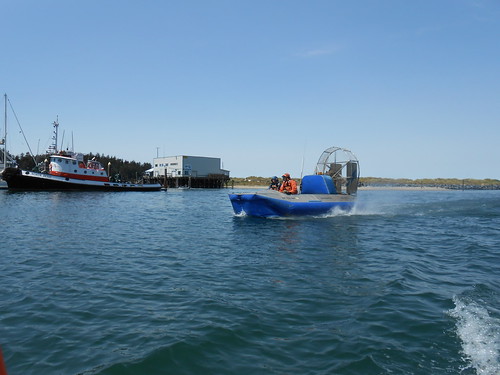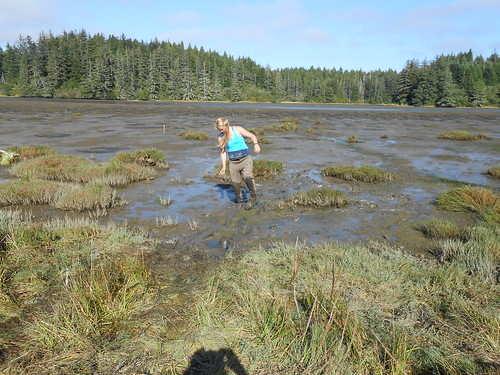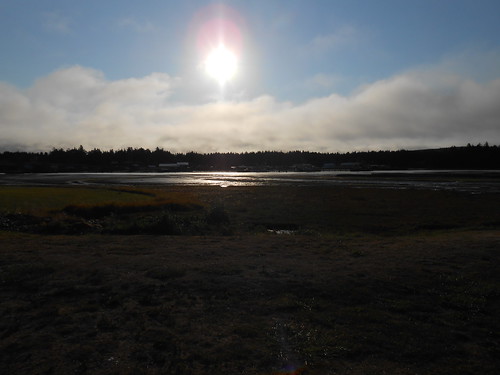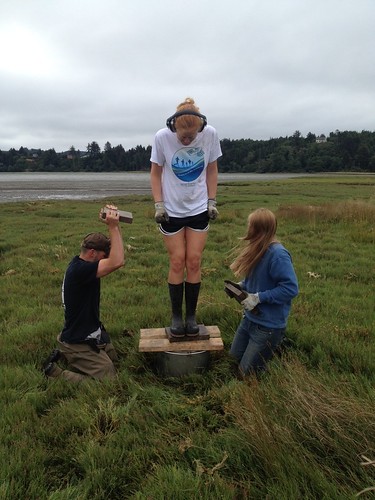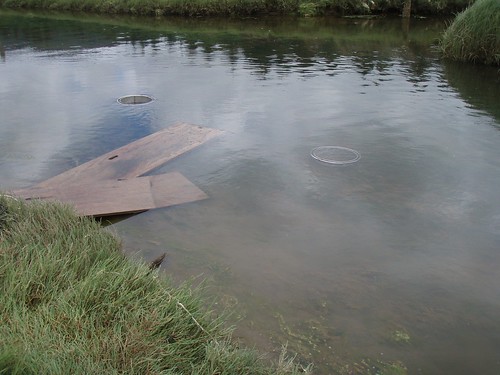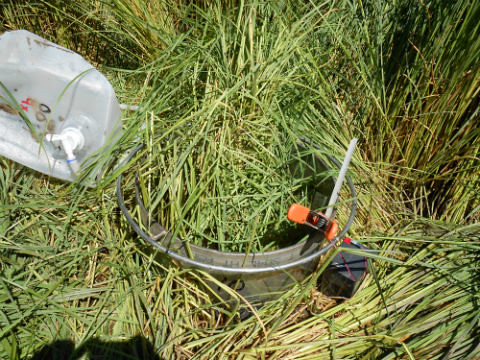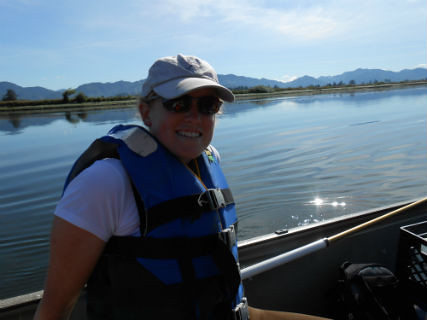It has been a busy second-to-last week on the nutrient uptake project. The first two days were spent finishing up our five replicates at Winant, a special little salt marsh that is near and dear to the hearts of many at the EPA. Wednesday was spent in the lab doing more data entry and looking at the cross-estuary results to see how they could be incorporated into my project on the effect of temperature on nutrient uptake. We also prepared for our two day trip to Coos Bay, which included scrounging up as many coolers as we possibly could to house all our precious nutrient spiked salt water for the overnight journey.
Thursday we began our trip to Coos Bay. Looking at Eric’s photos is seems like we got lucky in terms of getting a cloudless, fogless day. Above is a picture of the hovercraft at its peak of performance, hovering through the bay. Another researcher at the Oregon Institute of Marine Biology wanted a ride so she got one. Below is the site we studied the first day. A fellow intern is seen walking through the mud. I lost both boots in this mud and had to pull them out with my hands. I think I need to work on tying them better. This site was more pristine than other sites and relatively devoid of human presence, which was ideal for our experiments and for our own pleasure. It was peaceful.
That night we went to the best and possibly only Thai restaurant in Coos Bay and then went to our yurt to sleep. I had always wanted to sleep in a yurt so I was excited, but after a nearly twelve hour work day I was too tired to marvel long at its yurtliness. The next morning we awoke early to get to our second site shown below. This site had its issues as dogs roamed free to poop and pee anywhere they pleased as it was near a trailer park, quite the contrast to our site from yesterday. My mentor had originally wanted to go to a slightly different location, but No Trespassing signs blocked our entry and he did not want us ending up on a WANTED poster. Our next attempted solution was to cross a section of the mudflat to get to some salt marsh islands. We brought some equipment out there, but quickly realized we would be screwed for getting out when the tide came in. We quickly returned to the mainland and sure enough, in the middle of the experiment the tide came, which would have made the passage quite difficult.
In the end, we set up our experiment in the marsh where the dogs roamed. I am not sure about the quality of that data. After these experiments we quickly returned to Newport so my mentor could meet with some visiting EPA people from Washington D.C. It is important to show them that research is active and thriving (which it is!) so they know their funding is going to a worthy cause.
It is hard to believe that my internship is almost over here in Oregon. It has been a great summer with a lot of experience gained and a lot of memories created. I just need to finish it up by giving my presentations, writing my paper, and finishing the last bit of fieldwork on Monday. I am sad the summer of fieldwork is over, but it has inspired me for graduate school and beyond.
This weekend has been a lazy weekend of hanging around in Newport, which is fine for me because I finally–after nine weeks of deliberation–bought a ukelele! According to Google it is the easiest instrument to learn, so I am optimistic of my ability to make some good sound come out of it. I also hope to surf today. We will see how that goes.

